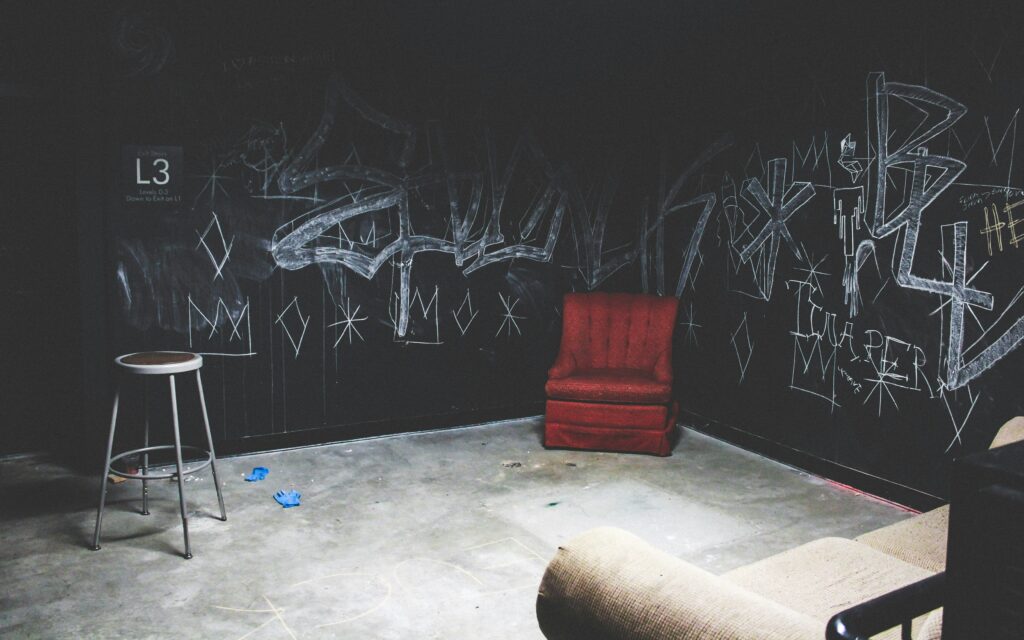Why Curb Appeal Matters (Even on a Tight Budget)
First impressions count—no matter how nice your kitchen is inside. Buyers, guests, neighbors—they all judge your home the second they spot it from the street. Good curb appeal doesn’t just boost pride; it bumps up resale value and makes your home feel more cared for, more put together. Even if you’re not selling, it affects how your property fits into the neighborhood and how people treat it.
The good news? You don’t need to pour thousands into landscaping or hire a pro crew. Small upgrades can flip the script fast: a fresh coat of paint on the front door, some sharp lighting after sunset, or a couple clean planter boxes can change the entire vibe. These are low-cost, high-impact steps that pay off immediately.
And no—DIY doesn’t mean slapdash. With a bit of planning and elbow grease, your weekend projects can look studio-made. It’s about choosing the right materials, taking prep seriously, and keeping the finish clean. Style isn’t about price tags—it’s about execution.
Project 1: Repainting the Front Door
A fresh coat of paint on your front door is one of the simplest, cheapest ways to boost curb appeal—and the payoff is instant. For the cost of a quart of exterior paint and a weekend afternoon, you can completely change how your home feels from the street.
Choosing Colors That Pop (And What to Avoid)
Stick with colors that contrast just enough to stand out, but don’t clash with the rest of your home. Deep navy, bold red, matte black, or mossy green all bring personality without screaming for attention. Skip neons and anything too trendy unless you’re repainting often. The key is timeless with a twist.
If you’re unsure, look around the neighborhood. You don’t need to copy anyone—but a pop without harmony can feel jarring instead of inviting.
Step-by-Step Basics
1. Prep matters more than paint. Start by cleaning the door—soap, water, and a scrub brush will do. Sand it lightly if the surface is rough or flaking.
2. Tape hardware. Handle, lock, hinges—tape everything you don’t want painted.
3. Prime it if needed. If you’re going from dark to light (or vice versa), a thin coat of primer prevents streaks and uneven tone.
4. Use the right paint. Go for exterior-grade paint in a satin or semi-gloss finish. It holds up well and wipes clean easily.
5. Apply thin coats. Two thin coats are better than one thick one. Allow drying time in between.
6. Don’t rush the finish. Paint in the morning so it can dry by evening. Don’t shut the door too soon or the paint might stick.
That’s it. One door, low cost, major impact.
Project 2: Build Your Own Planter Boxes
You don’t need cedar planks or custom hardware to get the look. Budget-wise, pressure-treated pine, recycled pallets, or even leftover fence boards will do the job. Local hardware stores often sell offcuts for a fraction of the cost—just give them a light sanding and they’re ready to go. If you’re into upcycling, old drawers or crates can turn into charming containers with almost zero spend.
For small or narrow spaces, go vertical. Stackable wall planters, repurposed shoe organizers, or ladder-style frames let you grow upward without eating into the square footage. A small balcony or tight porch can still pop with greens if you go smart on layout.
Once you’ve built your boxes, don’t skip the finish work. A coat of exterior paint or wood sealant protects against weather and adds polish. Want a bit of color? Try muted tones like sage, charcoal, or navy—enough to stand out without overwhelming the space. The key is to keep it clean and intentional. Functional can still look great—and often, simpler builds have the most character.
Project 3: DIY Outdoor Lighting
Lighting doesn’t just help you see at night—it sets the whole mood of your home’s exterior. When done right, a few fixtures can turn a boring yard into a place people want to hang out. But before you start stringing bulbs or digging trenches, figure out what kind of power source fits your setup.
Solar lighting is a clear winner if you’re working with a limited budget and prefer low-maintenance upkeep. These lights charge during the day and automatically turn on at dusk. Stick them along walkways, nestle them in flower beds, or tuck a few into planters. No wires, no fuss. That said, solar lights sometimes struggle in shady areas or during long, cloudy stretches. In short—they’re not always reliable for full illumination.
Wired options take more effort upfront (and often a bit more cash), but they’re consistent and versatile. If you want noticeable uplighting for trees, strong visibility for entryways, or anything motion-triggered for security, wired beats solar every time. Also, some designs can take smart bulbs, adding features like timers or remote control.
For budget-friendly ambiance that still delivers personality, don’t overlook the DIY classics. Mason jar lanterns (hung or planted in stakes), LED pathway lights, and even old-school string lights can do a lot with a little. Mix warm lighting for mood and cooler tones for safety.
Bottom line: Combine both solar and wired where it makes sense. Use solar where you need easy glow and some flair. Use wired when you care about reliable brightness or want to trick out key spots. Light what matters, and let the rest fade out.
Project 4: House Numbers That Stand Out
An easy way to upgrade curb appeal? Ditch the dated, peeling house numbers and swap them for something with modern punch. Clean lines, bold fonts, and new materials make a bigger impact than you’d think—and you don’t have to spend much to pull it off.
For a quick DIY, try cutting numbers out of wood or metal, or use heavy-duty stencils to paint them directly onto your front wall or mailbox. If tools aren’t your thing, ready-made modern numbers are cheap and easy to mount. Matte black, brushed nickel, or even bright contrasting colors work well, especially against lighter walls.
Placement matters. Make sure your numbers are eye-level and visible from the street—don’t hide them behind shrubs or stick them halfway down the doorframe. Symmetry helps, but don’t be afraid to get a little creative with layout if it adds to your home’s style. Whether it’s mounted flush on the siding, floating off the wall for effect, or framed in reclaimed wood, standout house numbers add character fast without overcomplicating your weekend.
Project 5: Clean and Resurface the Driveway or Walkway
Your driveway and walkway take up a large portion of your home’s curb appeal—but they’re often overlooked. With a few simple and budget-friendly DIY strategies, you can dramatically improve their appearance without professional help.
Step 1: Power Washing Basics
Before you do anything else, give your driveway or walkway a thorough power wash. Years of dirt, grime, oil stains, and even moss can accumulate and dull the surface.
– Rent or borrow a power washer—many hardware stores offer affordable daily rentals
– Start with a detergent designed for concrete, then rinse thoroughly
– Work in consistent sections to avoid uneven cleaning marks
A good cleaning alone can revive concrete and reveal its true color and texture.
Step 2: Painting or Sealing Concrete
Once your surface is clean and dry, painting or sealing can add new life—and color—to your concrete.
– Concrete paint: Adds color and a finished look; great for walkways and patios
– Concrete stain: Offers a more natural tone with added depth
– Sealers: Help protect from weather, oil stains, and wear
Tip: Choose an exterior-grade product designed for foot or vehicle traffic, and follow drying times carefully for best results.
Step 3: Quick Fixes for Cracks and Uneven Spots
Cracks and dips may not seem like a big deal, but they’re highly visible and can get worse over time.
– Use ready-mix crack fillers for small gaps
– Patch uneven areas with resurfacing compound or concrete repair kits
– Sand smooth and blend with the rest of the surface when dry
Though more extensive damage may require professional repair, tackling small issues yourself keeps things looking clean and cared-for.
Improving your driveway or walkway doesn’t have to mean a full renovation. With targeted cleaning and a few strategic upgrades, you can boost your curb appeal in a single weekend.
Bonus: Create a DIY Garden Border
A garden border is one of those low-effort, high-impact upgrades that adds polish without much cost. Stones, reclaimed timber, or even old bricks you have lying around can work well here. The goal isn’t perfection—it’s to bring a sense of structure and intention to your front yard.
Lay stones along garden beds or walkways to create clean visual separation. Timber edging is great for a more natural, rustic edge, and works especially well if you’re going for that cabin-in-the-suburbs vibe. Recycled materials, like broken concrete chunks or repurposed tiles, can add a creative touch and help cut down on waste.
To add color, plant low-maintenance flowers or herbs just inside the border. Keep spacing even—roughly a hand’s width between pieces—and don’t forget to level your materials so nothing looks accidental. The real secret: don’t overthink it. Simple runs clean, and intentional beats fancy any day.
Common Mistakes to Avoid
There’s a fine line between elevated curb appeal and doing too much. Overdesigning your space with clashing styles, overcrowded decor, or too many focal points can work against you. When in doubt, pull back. A clean, focused look often makes a stronger statement than a chaotic one.
Another common misstep is skipping surface prep. Whether you’re painting your front door or sealing your driveway, putting in time to clean, sand, or prime makes a big difference. Slapping paint over dirt or cracked concrete only guarantees you’ll be back at it again—sooner and more frustrated.
Lastly, don’t forget the future. It’s easy to get caught up in finish lines, but maintenance is the long game. That charming flower bed will wilt unless you plan to water. That newly painted trim will peel if ignored. Outdoor DIY only pays off when you think beyond the weekend project—so take five minutes to think about the upkeep before you start.
Where to Start If You Only Have a Weekend
If you’ve only got a couple of days and a tight budget, go for projects that punch above their weight in visual impact. Start with the front door. A fresh coat of paint takes a few hours, costs little, and can completely shift how your home looks from the street.
Next, tackle house numbers. It’s a low-effort, high-payoff fix. Swapping out old ones or creating a custom set adds personality without draining your wallet—or your time.
If you have energy to spare, roll in a small garden border. Using stones or reclaimed wood adds structure to your yard without needing landscaping experience. Combine that with a couple of DIY planter boxes and you’re in solid territory.
Here’s a ranked list to guide you:
1. Paint the front door — low cost, high impact, 2–3 hours
2. Upgrade house numbers — low cost, low effort, 1 hour
3. DIY garden border — medium cost, low skill, 3–4 hours
4. Build planter boxes — medium cost, more time-intensive, 4–6 hours
5. Clean the driveway — free if you already own a pressure washer, around 2 hours
6. Add solar lights — upfront cost, but 1-hour install and lasting effect
Stacking two or three quick wins makes your curb look sharp fast. Don’t chase perfection—chase progress. Want more weekend-friendly ideas? Check out Easy Weekend DIY Projects for Any Homeowner.
Final Takeaway: Smart, Simple, and Designed to Impress
Creating a welcoming and polished exterior doesn’t require a big renovation budget. With a bit of planning and a willingness to get hands-on, your curb appeal can get a noticeable upgrade—without draining your wallet.
Spend Smarter, Not Bigger
Big budgets aren’t always better. In fact, many high-impact upgrades can be done with minimal investment if you’re strategic:
– Focus on one small area at a time (front door, lighting, garden border)
– Use reclaimed or recycled materials whenever possible
– Choose upgrades that solve a problem and improve visual appeal
Curb Appeal Is About Perception
Curb appeal isn’t just about expensive features—it’s about clean lines, fresh finishes, and thoughtful details that show care and pride of ownership.
Here’s what really counts:
– A freshly painted door in a bold yet tasteful color
– Trimmed walkways and tidy borders
– Modern house numbers or lighting that complements the house style
Build at Your Own Pace
You don’t have to get everything done in a weekend. Take the slow and steady route—just be consistent:
– Set a monthly goal: one project or touch-up
– Revisit the same areas seasonally to maintain their look
– Layer on improvements as time and budget allow
The key is to stay intentional. Over time, small changes add up to a major transformation—on your own terms, and within your budget.




